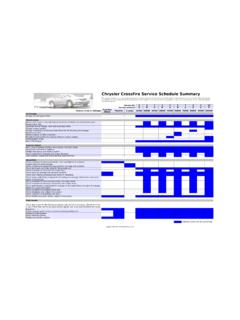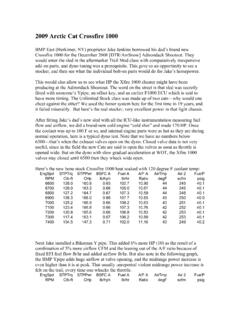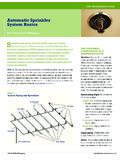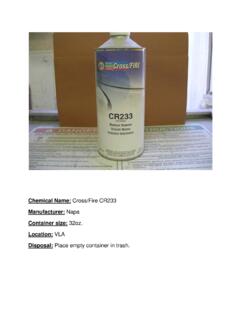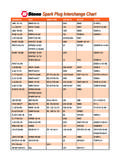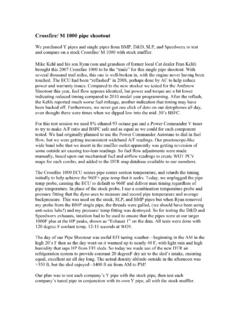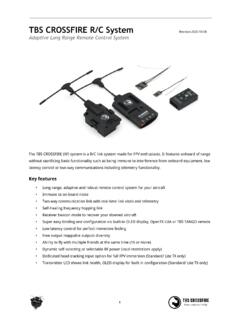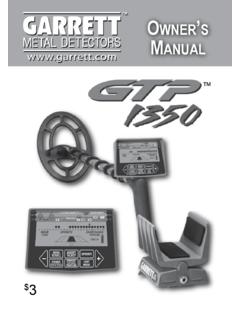Transcription of Introduction to Cross Laminated Timber
1 WOOD DESIGN FOCUS V. 22, N. 2 3 M. Mohammad, Sylvain Gagnon, Eng., Bradford K. Douglas, , Lisa Podesto Introduction to Cross Laminated Timber ABSTRACT Cross - Laminated Timber (CLT), a new generation of engi-neered wood product developed initially in Europe, has been gaining popularity in residential and non-residential applications in several countries. Numerous impressive low- and mid-rise buildings built around the world using CLT showcase the many advantages that this product can offer to the construction sector. This article provides basic information on the various attributes of CLT as a product and as structural system in general, and exam-ples of buildings made of CLT panels.
2 A road map for codes and standards implementation of CLT in North America is included, along with an indication of some of the obstacles that can be expected. BRIEF HISTORY Cross Laminated Timber (CLT) is a relatively new building system of interest in North American construction which is helping to define a new class of Timber products known as massive Timber . It is a potentially cost-competitive wood-based solution that complements the existing light frame and heavy Timber options, and is a suitable candidate for some applications which currently use concrete, masonry and steel. CLT is an innovative wood product that was introduced in the early 1990s in Austria and Germany and has been gaining popularity in residential and non-residential applications in Europe.
3 There are currently over one hundred CLT projects in Europe. In the mid-1990s, Austria undertook an industry-academia joint research effort that resulted in the devel-opment of modern CLT [1]. After several slow years, construction in CLT increased significantly in the early 2000s, partially driven by the green building movement but also due to better efficiencies, product approvals, and improved marketing and distribution channels. An-other important factor has been the perception that CLT, like masonry and concrete, is a heavy construction sys-tem which is typical in multi-story residential construction in many European countries. The use of CLT panels in buildings has increased over the last few years in Europe.
4 Hundreds of impressive buildings and other types of structures built around the world using CLT show the many advantages this product can offer to the construction sector. The European expe-rience shows that CLT construction can be competitive, particularly in mid-rise and high-rise buildings. Easy han-dling during construction and a high level of prefabrica-tion facilitate rapid project completion. This is a key ad-vantage, especially in mid-rise construction ( 5 to 8 storys). Good thermal insulation, good sound insulation and good performance under fire are added benefits that come as a result of the massive wood structure. DEVELOPMENT OF CLT IN NORTH AMERICA While this product is well-established in Europe, work on the implementation of CLT products and systems has just begun in Canada and the United States.
5 The use of CLT in North America is gaining interest in both the con-struction and wood industries. At this time, there are four North American manufacturers currently producing CLT and several others are in the process of product and manufacturing assessment or have already started pilot production. Under the Transformative Technologies Pro-gram of Natural Resources Canada, FPInnovations launched a multi-disciplinary research program on CLT in 2005. Based on these studies and the knowledge gained from the European experience, FPInnovations prepared a peer-reviewed CLT Handbook [1]. More re-cently, a harmonized North American CLT product standard, Standard for Performance Rated CLT (ANSI/APA PRG 320) was developed by the ANSI/APA CLT Standard Committee and published in December 2011 [2].
6 The driving force behind the development of CLT in North America is the need to provide alternative wood-based products and systems to architects and engi-neers. In Canada, adoption of the 2005 and 2010 editions of the National Building Code of Canada (NBCC), which are objective-based codes, helped to eliminate the bias against wood inherent in previous prescriptive codes (1995 and earlier). The new format recognizes both Acceptable Solutions and Alternative Solutions which encourage the use of innovative materials, products and systems [3]. Similarly, in the US there are performance- WOOD DESIGN FOCUS V.
7 22, N. 2 4 based building codes that state an expected level of per-formance, and there are provisions in the prescriptive-based building codes that allow the use of alternate meth-ods and materials. DEFINITION OF Cross - Laminated Timber (CLT) CLT panels consist of several layers of structural lumber boards stacked crosswise (typically at 90 degrees) and glued together on their wide faces and, sometimes, on the narrow faces as well. A Cross -section of a CLT ele-ment has at least three glued layers of boards placed in orthogonally alternating orientation to the neighboring layers. In special configurations, consecutive layers may be placed in the same direction, giving a double layer ( double longitudinal layers at the outer faces and ad-ditional double layers at the core of the panel) to obtain specific structural capacities.
8 CLT products are usually fabricated with three to seven layers and even more in some cases. Figure 1 includes a diagram and photograph of a CLT panel configuration while Figure 2 is a diagram of possible CLT panel Cross -sections. Figure 3 is a dia-gram of a 5-layer CLT panel including both Cross -sectional views. Thickness of individual lumber pieces may vary from 16 mm to 51 mm (5/8 inch to inch) and width may vary from about 60 mm to 240 mm ( inch to inch). Boards are fingerjointed using structural adhesive. Lum-ber is visually-graded or machine stress-rated and is kiln dried. Panel sizes vary by manufacturer; typical widths are m ( ft), m ( ft), and 3 m ( ft) (could be up to 4~5 m ( ~ ft) in particular cases) while length can be up to 18 m (60 ft) and the thickness can be up to 508 mm (20 inches).
9 Transportation regulations may impose limitations to CLT panel size. Lumber in the outer layers of CLT panels used as walls are normally oriented parallel to vertical loads to maximize the wall resistance. Likewise, for floor and roof systems, the outer layers run parallel to the major span direction. KEY ADVANTAGES OF Cross -LAMINATING Cross - Laminated Timber used for prefabricated wall and floor panels offers many advantages. The Cross -laminating process provides improved dimensional stabil-ity to the product which allows for prefabrication of wide and long floor slabs and single story long walls. Addition-ally, Cross -laminating provides relatively high in-plane and out-of-plane strength and stiffness properties in both di-rections, giving these panels a two-way action capability similar to a reinforced concrete slab.
10 The reinforcement effect provided by the Cross lamination in CLT also con-siderably increases the splitting resistance of CLT for cer-tain types of connection systems. Figure 4 is a diagram illustrating the primary difference between CLT and glulam products. Figure 5a is a dia-gram of a floor built with four individual CLT panels acting mostly in one direction, while Figure 5b is a diagram of the same floor, this time built with one CLT panel only acting most likely in two directions ( two-way action). MANUFACTURING PROCESS A typical manufacturing process of CLT includes the fol-lowing steps: lumber selection, lumber grouping and plan-ing, adhesive application, panel lay-up and pressing, product cutting, marking and packaging.
